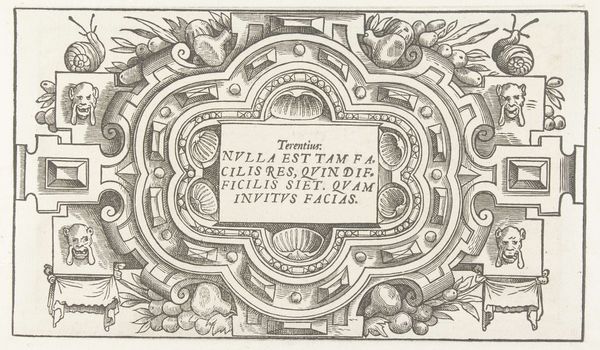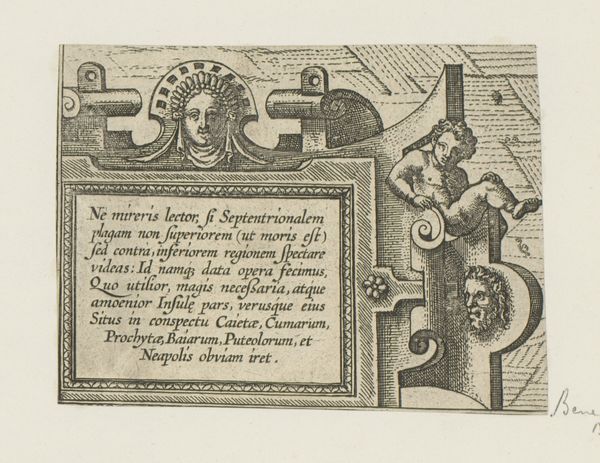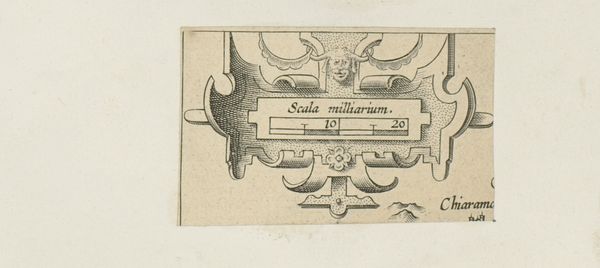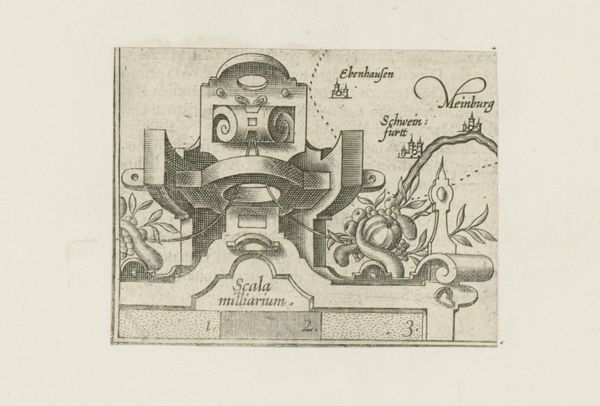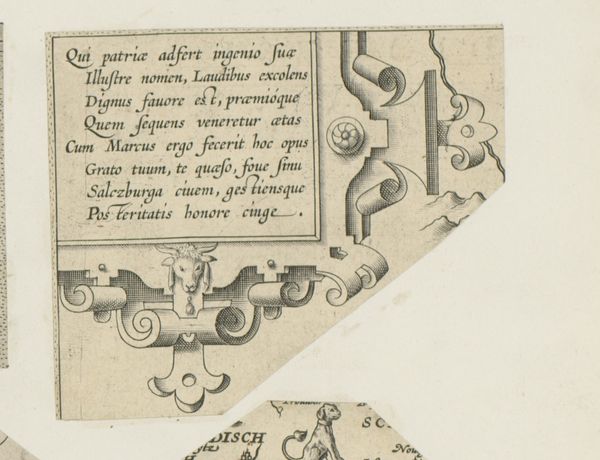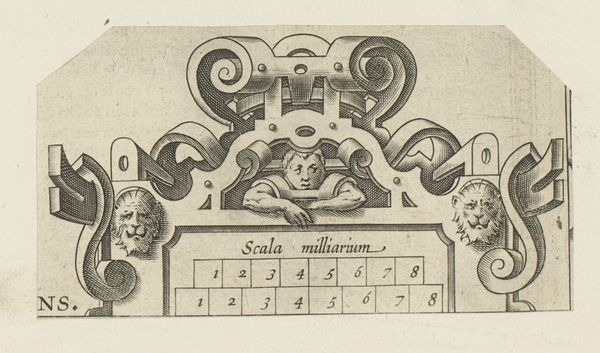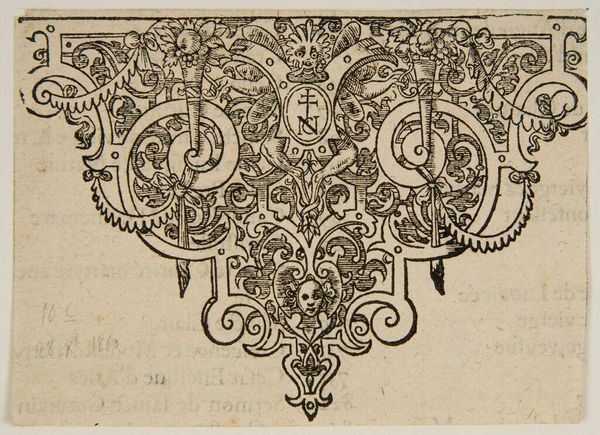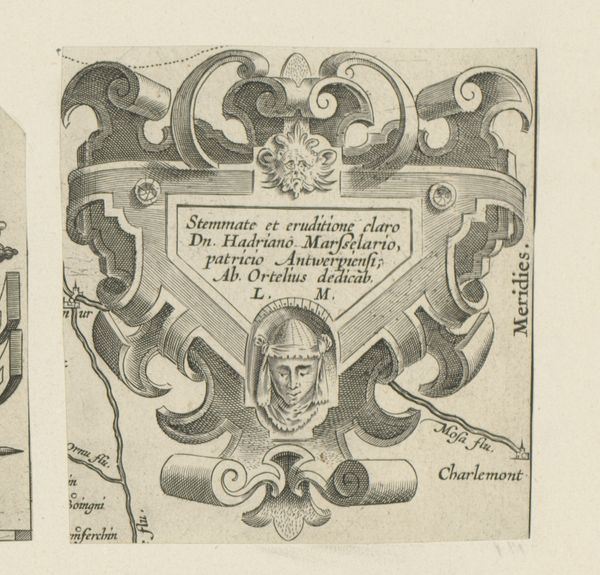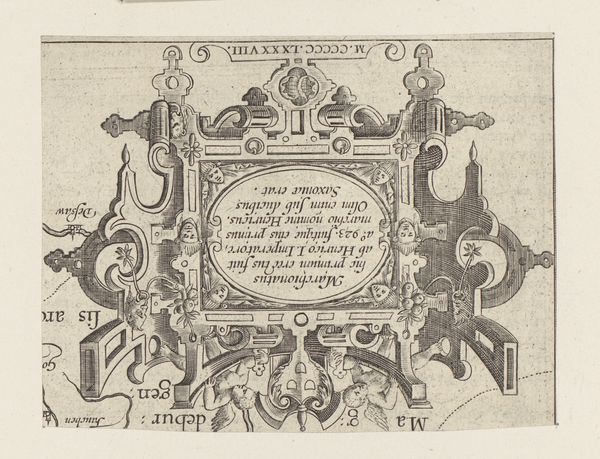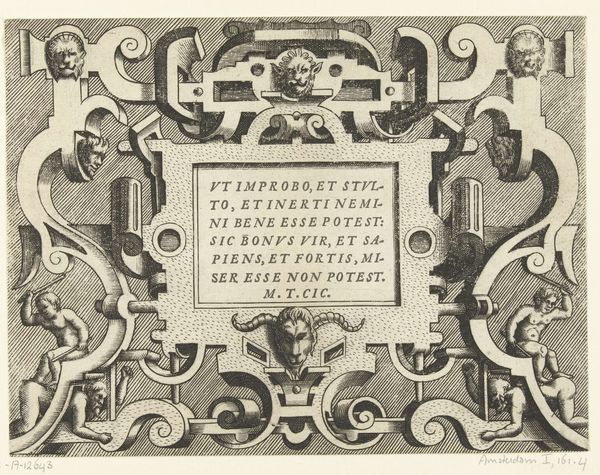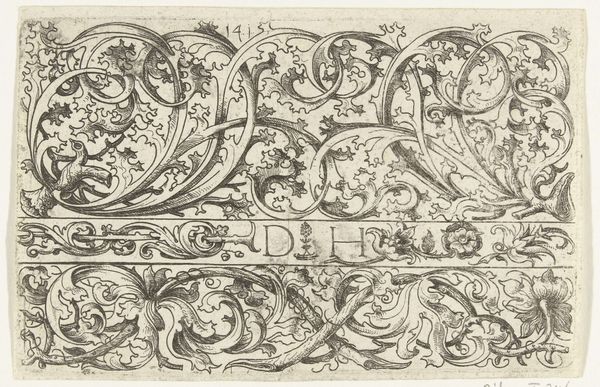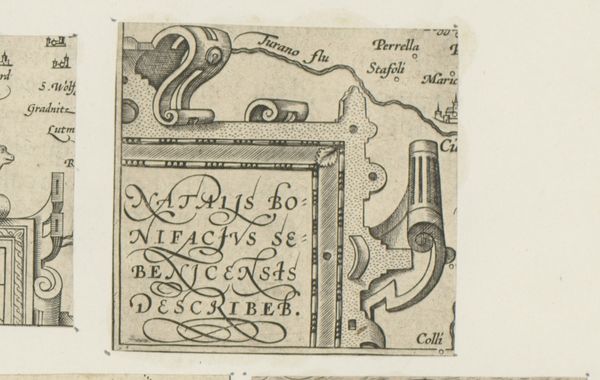
print, engraving
# print
#
pen sketch
#
11_renaissance
#
engraving
Dimensions: height 68 mm, width 98 mm
Copyright: Rijks Museum: Open Domain
Curator: Editor: Here we have a print, specifically an engraving, titled "Hoekcartouche met masker en schelpornamenten," created between 1587 and 1590 by an anonymous artist. It features detailed ornamentation with masks and shell motifs. I'm curious, with your expertise, what stands out to you in this piece? Curator: Well, consider the labor involved in its creation. The very act of engraving demands specific tools, skills honed through dedicated training and repetition. Each line, each curve, is a testament to the engraver's control over material – the metal plate, the burin. The shells, the mask... were these mass-produced objects that this print references? Or status symbols available to wealthy patrons of the arts? What sort of access did people have to images like these and what was their use? Editor: That’s interesting. So you see the engraving primarily as a result of the engraver's labor and material constraints? It does appear to require immense skill to reproduce such minute detail. Curator: Exactly. And furthermore, let’s consider its purpose within a specific economy of printmaking. Was it intended for scientific illustration? Architectural guides? Ornament pattern books? The "Scala milliariorum Lotharingicorum" inscription suggests a cartographic or measuring purpose. How did this image function as a commodity? Editor: Ah, I see, the text pointing to a functional, cartographic purpose complicates a purely aesthetic reading. Thinking about it as part of the wider historical production of prints, not simply as a standalone image is helpful. Curator: Precisely. It allows us to examine the social circulation of knowledge, craft practices, and perhaps even the standardization of early modern measurement, beyond questions of style and influence alone. Editor: This perspective really enriches how I will examine prints moving forward. Curator: I think so too, examining what is available in these images and from that constructing how art participates and represents socio-economic standards can provide additional context and appreciation of a work.
Comments
No comments
Be the first to comment and join the conversation on the ultimate creative platform.
